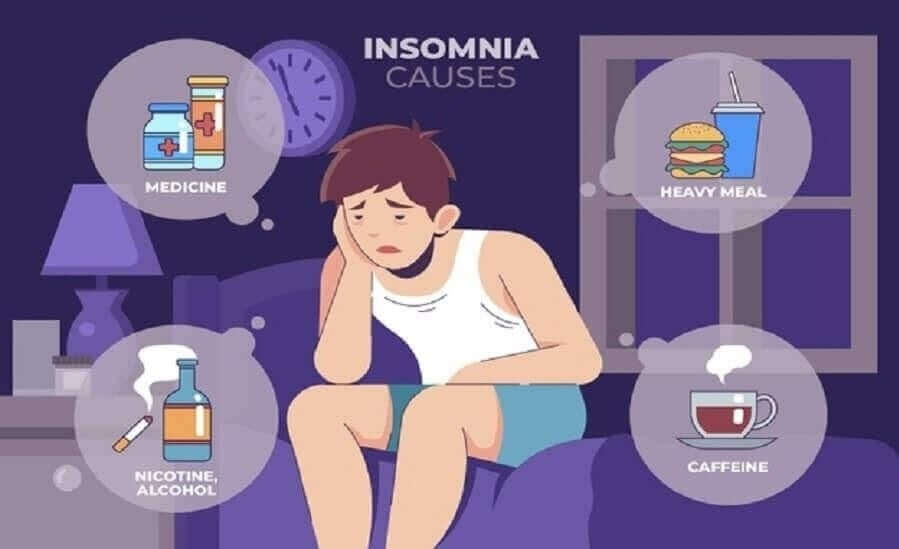Mindfulness-based therapy is normally used to reduce stress from one’s life. This miraculous therapy can be used to successfully treat many medical conditions including insomnia which is normally referred to as sleep disorders.
We will discuss the implementation of this therapy here and how can it help in minimizing the reasons for sleeplessness.
In this article, we will focus on insomnia, mindfulness-based therapy for insomnia, and outcomes of the therapy.
Table of Contents
Insomnia and its Treatment
Insomnia is a disorder that is diagnosed when you have symptoms like experiencing sleeplessness, finding it challenging to stay asleep all night, or always waking up in the morning too early.
Any or all of these symptoms can result in waking up in the morning feeling very tired, not remaining fresh during the day, and feeling difficulty in performing routine daily functions.
If these difficulties occur for a minimum of thrice a week or more and last for three months or more, you are required to see your psychiatrist for further diagnosis of the problem which is most probably “insomnia”.
Insomnia Causes

Insomnia may be caused by physiological or psychological factors that make it more likely for you to stay asleep easily, for example, you are a light sleeper, and you stay up at night thinking about the next day.
Environmental factors such as how dark, quiet, and cool your room are where you sleep can also impact the quality of sleep.
Behavior which includes habits such as using your phone while lying down in bed, or having heavy meals before going to bed also been shown to affect sleep.
All of these factors trigger sleepless nights and when it persists long enough may result in insomnia.
Mindfulness-Based Therapy For Insomnia
we will explain the mindfulness-based therapy for insomnia. This was developed by Dr. Jason Ong, who is a psychologist at the northwestern medical group in the USA.
The first thing is that mindfulness-based therapy for insomnia (MBTI) employs the attitudes of mindfulness towards sleep. Now, we will explain that how to apply this concept to our sleep.
1. Beginner’s Mind (Curiosity)
It is to be noted that every night is unique in nature and is different from other nights in many ways.
Keeping this in mind, one must be able to broaden his/her mind and adopt new ways and methods to induce sleep and do not stick to your past tried ways that led you to a better night of sleep.
If the trials fail, do not worry. You will be able to think in new ways if you promote curiosity in your mind.
2. Non-Striving
One cannot be forced to sleep, but the sleep can be invited/unrolled instead. So, remember the example of I need to go to bed at this time, I need to have eight hours of sleep.
Keeping the example in mind and lying on your bed wondering why you still cannot sleep you have done everything right but still not falling asleep.
At this point, it is more being able to take a break, realize it’s not working and then if it happens, it would be wonderful.
3. Letting-Go (Non-Attachment)
Some people have a close attachment to their sleep and want to have an ideal sleep every night and if they do not get the expected one, they become worried about sleeplessness.
This is unhelpful so, just allowing what happened during the day, allowing the fact you are not sleeping right now to let go of it. When you can sleep it will come and you can fall asleep as needed.
4. Non-Judgmental
When someone is not being able to sleep at night, it is very usual that negativity develops in the mind. This happens mostly when you have not taken a good sleep for many nights.
When people get judgmental they get frustrated and angry, this makes it harder to fall asleep. So, by trying to be non-judgmental we can change our relation to sleep, and this way it might be easier for us to fall asleep.
5. Accepting
It is critically important to accept that sometimes we do not get a good sleep. In this case, one must try to overcome the situation of sleeplessness.
If we are unable to sleep at night due to insomnia, but not recognizing and accepting it, this means that we are pushing ourselves into another problem.
Therefore, getting out of bed, and watch a good movie or listen to a soothing rhythm may induce sleep. It is a good idea to teach acceptance to your mind and body regarding sleep.
6. Patience
Be patient, it is unlikely that both the quality and quantity of the sleep will be optimal right away.
Research has shown that it takes about four sessions at minimum to start to prove to be effective. Therefore, it is important for being patient in the process.
We will explain an example outline for the mindfulness-based therapy for insomnia containing eight sessions:-
| S.no | Session | Mindfulness Activity | Sleep-Related Activity |
| 1 | Introduction & Overview | Mindful breath practice | Model of insomnia- 3P’s |
| 2 | Stepping out of the automatic pilot | Body scan practice | Sleep hygiene/wakefulness |
| 3 | Paying attention to sleepiness & wakefulness | Mindful movement | Sleep consolidation |
| 4 | Working & sleeplessness at night | Formal practice/Movement | Stimulus control |
| 5 | Territory of insomnia | Formal practice/Movement | Territory of insomnia |
| 6 | Acceptance & letting go | Formal practice 3- minutes breathing space | Thoughts & feelings |
| 7 | Revisiting the relationship with sleep | Formal practice depleting/nurturing exercise | Relationship with sleep |
| 8 | Action plan | Formal practice | Future action plan |
Final Words
From the above discussion, it can be concluded that mindfulness therapy is not only useful in the alleviation of stress and anxiety but, it is also applicable for treating insomnia.
Hopefully, this article might help you to get better sleep. For worst conditions, you can consult your psychiatrist to support you and have mindfulness-based therapy sessions.



















